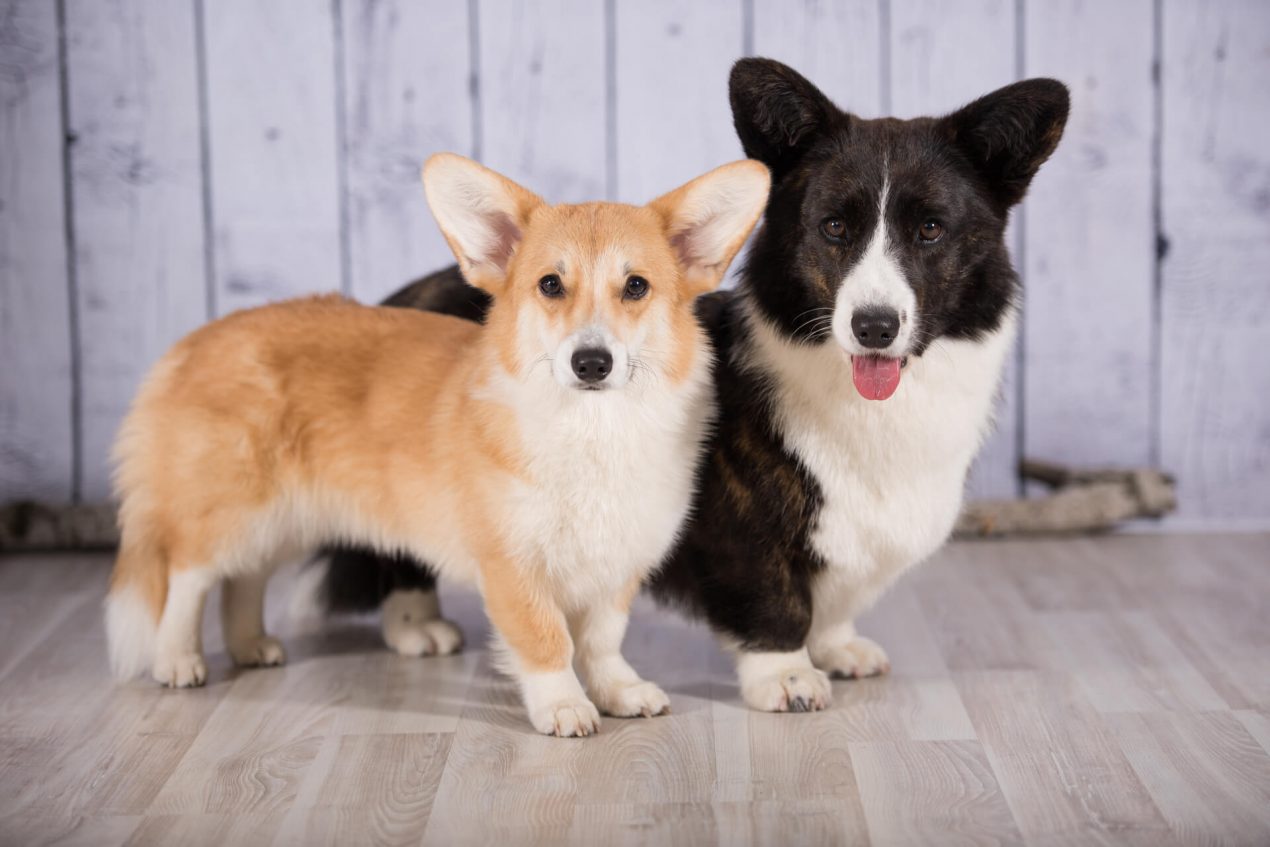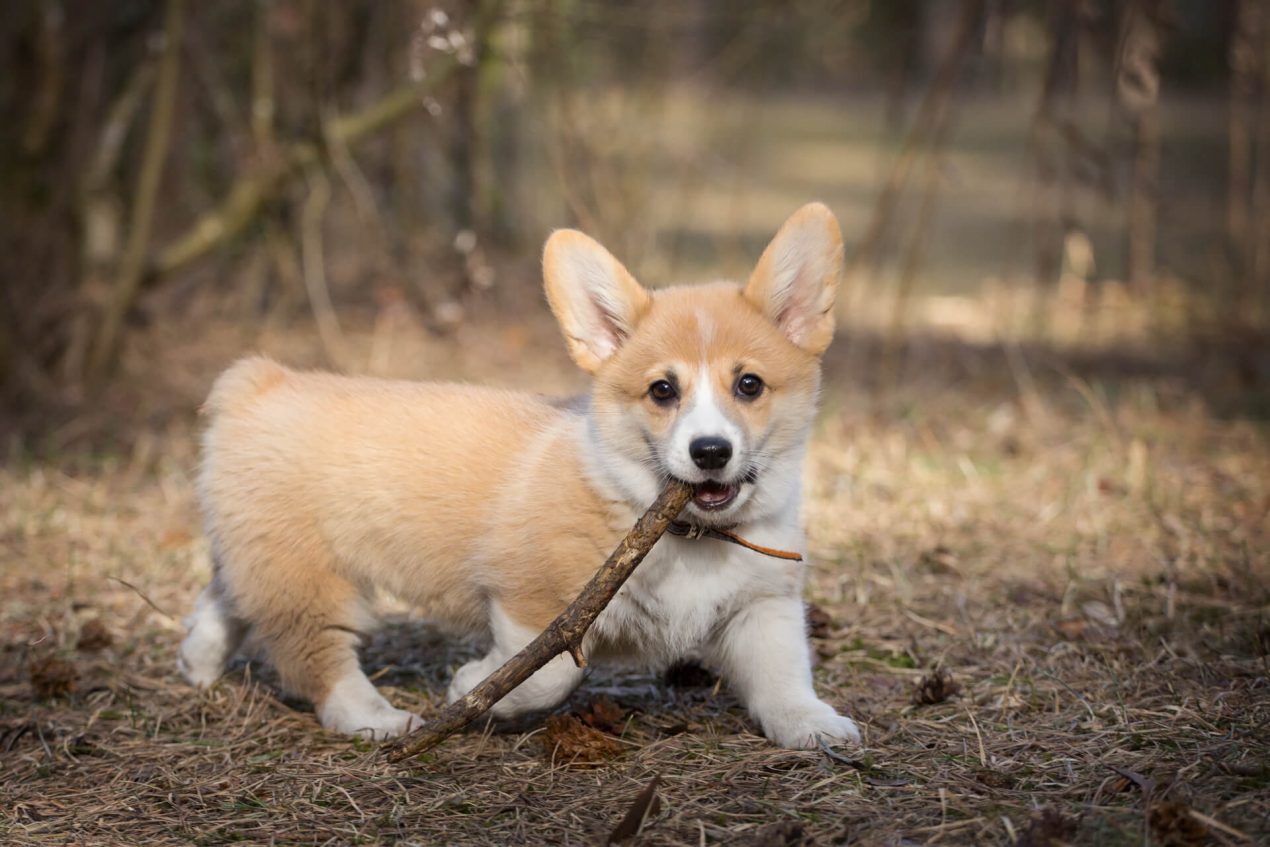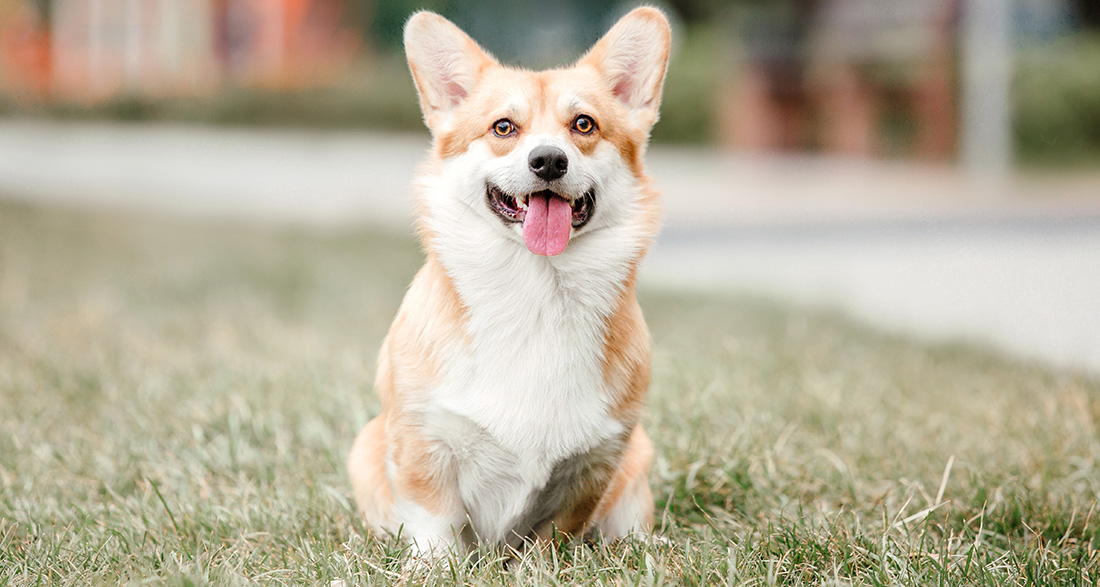With the top of a shepherd and the bottom of a dachshund, the Welsh Corgi is simply unmistakable with its distinctive appearance. Here in the profile, you’ll learn everything about the origin, temperament, and care of this spirited dog breed.
History of the Welsh Corgi
As the name suggests, the Welsh Corgi originally hails from Wales. It is believed to be descended from ancient Viking dogs or the dogs of Flemish immigrants. Due to its isolated island location, the breed was practically bred in pure form for many years. The locals used these agile dogs for herding cattle and as household watchdogs. While herding, despite their small size, they reliably ensured that all the cattle stayed on course. They lightly nipped at the cattle’s heels and swiftly dodged away. In 1925, the British Kennel Club established the official standard for the Welsh Corgi. After some disputes, in 1934, the breed was divided into the Welsh Corgi Pembroke and the Welsh Corgi Cardigan. The FCI classifies both breeds in Group 1 “Herding and Driving Dogs” in Section 1 “Sheepdogs.”
Breed Overview
GROUP: Herding
HEIGHT: 10 to 12 inches
WEIGHT: 24 to 30 pounds
COAT: Medium-length double coat
COAT COLOR: Black and tan, red, sable, or fawn (all colors are typically seen with white markings)
LIFE SPAN: 12 to 13 years
TEMPERAMENT: Friendly, outgoing, playful, protective
HYPOALLERGENIC: No
ORIGIN: Wales
Character and Temperament
Both Welsh Corgi breeds share roughly the same temperament. They are lively and friendly dogs who enjoy playing. They are affectionate to their families and patient with children. They form a strong bond with their humans and prefer to be with them always. For this reason, you shouldn’t leave the breed alone for long periods.
The spirited dog knows how to assert itself and can become challenging without proper training. Despite their small size, Welsh dogs are considered enthusiastic workers and resilient. The watchdog drive of these self-assured dogs is pronounced, but they do not show aggressiveness. Unfortunately, they tend to bark quickly and alert strangers on their property.
| Affection Level | High |
| Friendliness | High |
| Kid-Friendly | High |
| Pet-Friendly | Medium |
| Exercise Needs | High |
| Playfulness | High |
| Energy Level | Medium |
| Trainability | Medium |
| Intelligence | High |
| Tendency to Bark | Low |
| Amount of Shedding | High |
Appearance of the Welsh Corgi Pembroke
The Corgi is a medium-sized dog with very short legs compared to its body. The stocky, compact dog has short or medium-length hair with a dense undercoat. The two variations of the breed mainly differ in coat colors. While the Pembroke is mainly bred in reddish tones (red, sable, fawn, black with tan), the range for the Cardigan is much broader. Large white patches are undesirable in both breeds. The Pembroke standard requires a natural stub tail, while the Cardigan has a natural long tail.

Puppy Training
Despite their innocent appearance, Pembrokes and Cardigans can be quite stubborn dogs. They are full of confidence and like to assert their own will. To ensure that the little stubbornness doesn’t do as it pleases, consistent training of the dog is particularly important. However, you should also make sure to praise the dog often, as it values recognition highly. With loving and empathetic training, you can turn the short-legged dog into an excellent companion in all situations. The small dog loves to showcase learned skills and likes to make its owners proud.
Activities with the Welsh Corgi
For its size, the Welsh Corgi is a very active dog that needs daily exercise. Its short legs do not limit its endurance in any way, and it can easily keep up with its larger counterparts. Whether jogging, hiking, or cycling, the agile dogs are enthusiastic participants in any sporting activity. They also prove to be enduring athletes in challenging games or dog sports. To avoid boredom, the dogs can be enthusiastic about agility (without jumps) or obedience training. For mental stimulation, intelligence toys or scent work are suitable.

Health and Care
The soft and relatively short fur of Welsh Corgis doesn’t require excessive grooming. It’s enough to brush their coat once a week and a bit more often during shedding season. The dogs appreciate the extra cuddles and enjoy getting rid of loose hair. When feeding these small dogs, you should be cautious as they tend to overeat.
Give them only small portions and monitor their food intake to prevent them from gulping down their food too quickly. Health-wise, Pembrokes are generally robust dogs. However, due to their body structure, they shouldn’t engage in a lot of jumping as they can easily sustain fractures.
Is the Welsh Corgi Right for Me?
Since the Corgi is a natural herding and driving dog, despite its small size, it requires plenty of exercise. Therefore, it’s best suited for people who are physically active. Ideally, a home in the countryside with a large garden where the eager dog can guard would be perfect. As long as it’s not purely competitive sports, you’ll have a demanding athletic partner with a Welsh companion.
Since the breed is not widely spread in the United States, you’ll probably have difficulty finding puppies. If you want to bring a representative of the breed home, it’s best to look for a breeder affiliated with the British Herding Dog Club. You can expect to pay around $1,200 for a purebred Pembroke or Cardigan puppy.
Interesting and Fun Facts
According to legend, Corgis are actually the mounts of fairies. As a gift to humans, they left some puppies in the fields. Two children found the animals while tending to the family’s cattle and brought them home. They thought they were foxes, but the parents recognized them as dogs. They told their children that the puppies were a gift from the fairies. The fairies used the dogs to pull their carriages and rode on them. As proof, the parents pointed to the markings on their backs where the fairy saddles were placed. The children were thrilled and immediately fell in love with the puppies. They grew up and became beloved companions during cattle herding.
The dog breed is not only deeply rooted in Welsh legends but has also been Queen Elizabeth II’s favorite breed since 1933. Since receiving her first puppy, “Dookie,” at the age of seven, she has bred Welsh Corgi Pembrokes. She often walked with the small dogs herself and supervised the breeding program at Windsor Castle. In 2009, she discontinued breeding, and in April 2018, her last male named “Willow” passed away. The dogs now have such a cult status that in 2019, the animated feature film “The Queen’s Corgi” was released in theaters. You can watch the trailer here:
Do you have a Welsh Corgi or are you considering getting one? Share with me in the comments what you think makes them so special!


